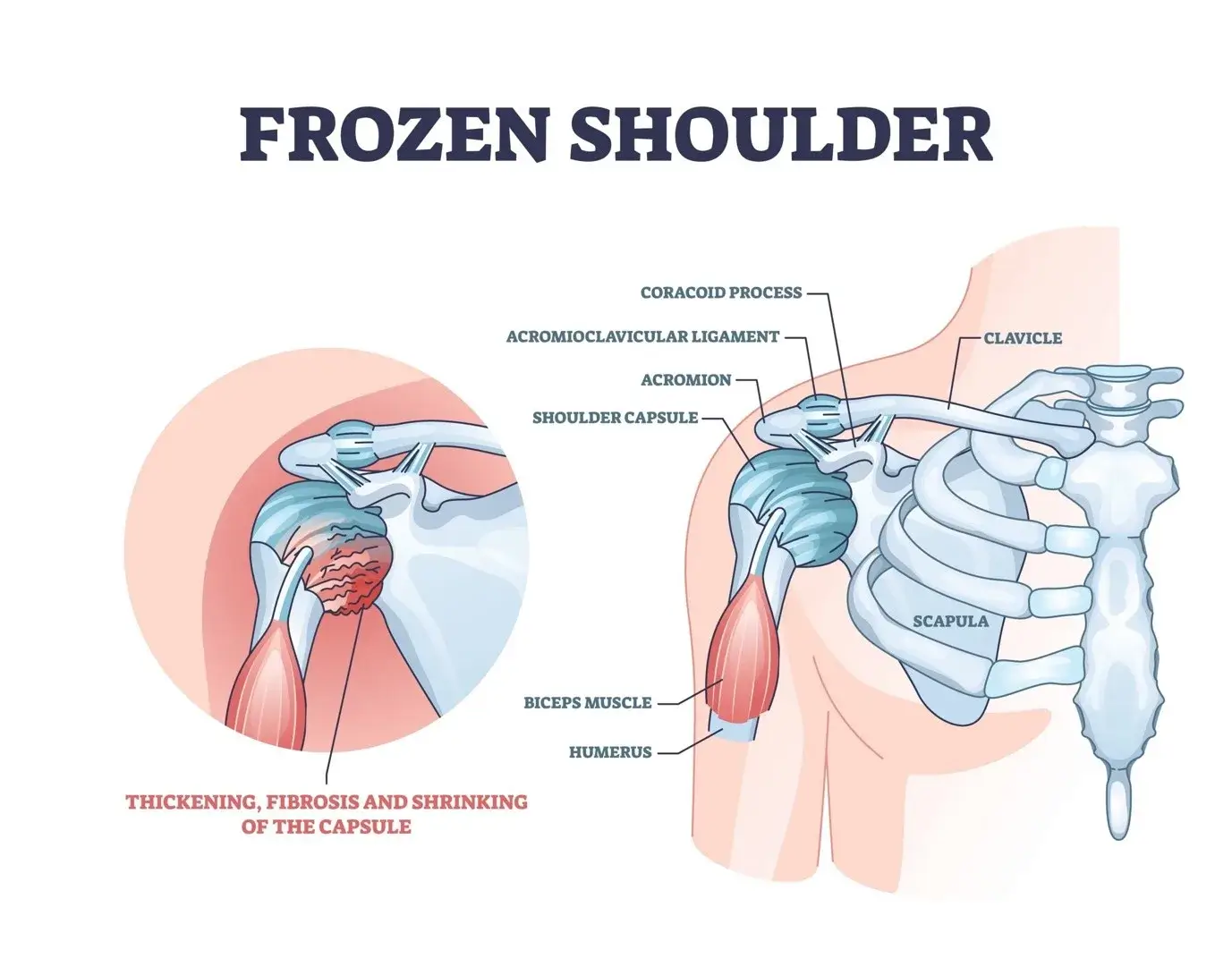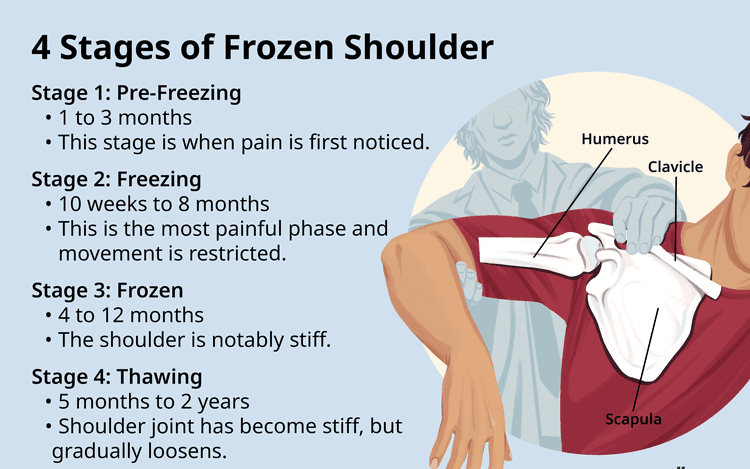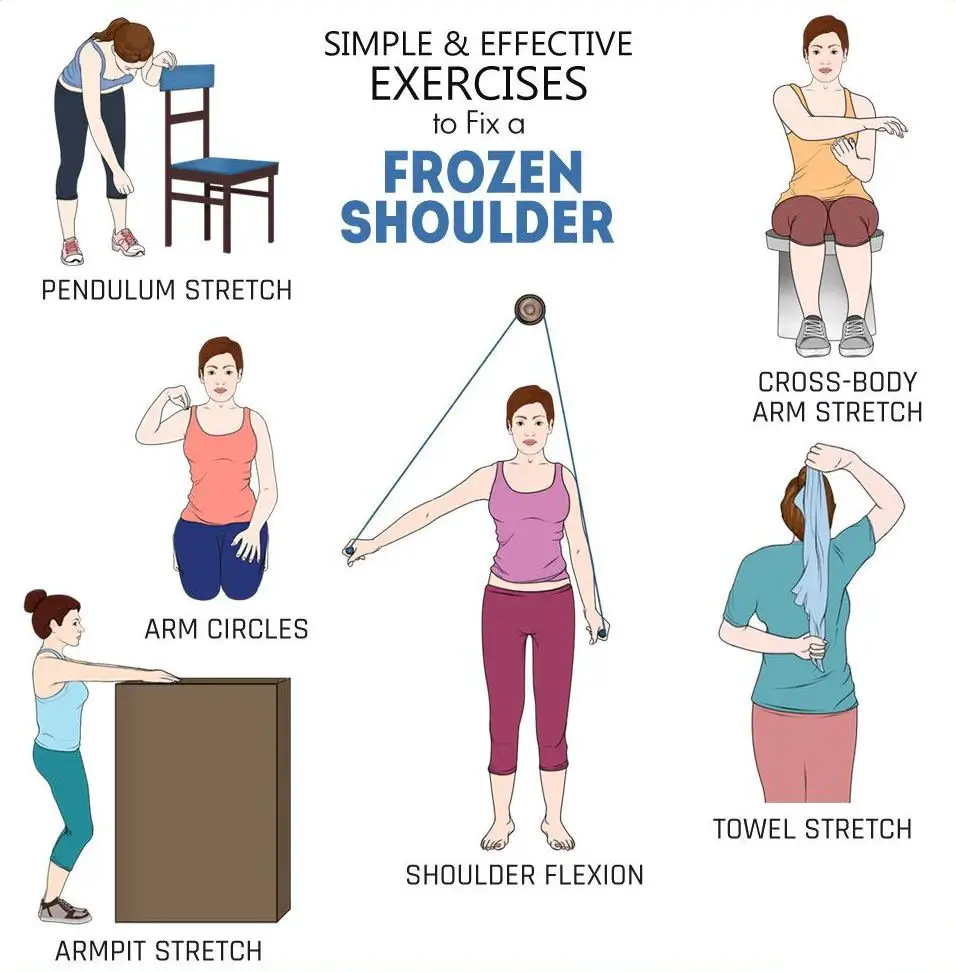
Frozen shoulder, medically known as adhesive capsulitis, is a painful condition that causes severe stiffness and restricted movement in the shoulder joint. It develops when the connective tissue surrounding the joint (the joint capsule) becomes thickened, inflamed, and tight, restricting the shoulder's ability to move freely. While it can be a frustrating and long-lasting condition, physiotherapy is the primary and most effective treatment to restore mobility and reduce pain.
What is Frozen Shoulder? The Three Stages
Frozen shoulder typically progresses through three distinct stages:
- Freezing Stage (Painful Stage): This stage is characterized by increasing pain, even at rest, and a gradual loss of shoulder motion. Pain often worsens at night. This phase can last from 6 weeks to 9 months.
- Frozen Stage (Adhesive Stage): Pain may lessen during this phase, but the stiffness becomes more pronounced. Moving the shoulder becomes very difficult. Daily activities like dressing or reaching are significantly impacted. This stage can last 4 to 12 months.
- Thawing Stage (Recovery Stage): Movement gradually improves during this phase. The pain may continue to decrease, and strength slowly returns. Full recovery can take anywhere from 6 months to 2 years, or even longer.
Causes and Risk Factors
The exact cause of frozen shoulder is often unknown, but it's more common after shoulder injury or surgery, or if the arm has been immobilized for a long time. Risk factors include:
- Age: Most common in people between 40 and 60 years old.
- Gender: More prevalent in women.
- Diabetes: Individuals with diabetes are at a significantly higher risk.
- Other Medical Conditions: Thyroid problems, Parkinson's disease, and heart disease.
- Immobilization: Following surgery, fracture, or stroke.

The Role of Physiotherapy in Frozen Shoulder Recovery
Physiotherapy is crucial at all stages of frozen shoulder to manage pain, prevent further stiffness, and gradually restore movement. A personalized treatment plan may include:
- Pain Management: Using heat, ice, or other modalities to alleviate pain, especially during the freezing stage.
- Gentle Mobilization: Specific manual techniques to gently stretch the joint capsule and improve range of motion without causing excessive pain.
- Therapeutic Exercises: Progressive stretching and strengthening exercises to restore flexibility, strength, and function. These will be carefully tailored to your pain tolerance and stage of recovery.
- Home Exercise Program: Teaching you exercises to perform regularly at home to maintain progress and accelerate recovery. Consistency is key.
- Education: Understanding the condition, appropriate activity levels, and how to protect your shoulder while it heals.

Prevention is Better Than Cure
If you've had a shoulder injury or surgery that requires immobilization, it's vital to start gentle range-of-motion exercises as soon as safely possible, under the guidance of a physiotherapist, to prevent the onset of frozen shoulder. Regular, gentle movement and stretching can often keep the capsule from tightening.
Frozen shoulder can be a long and challenging journey, but with consistent physiotherapy, significant improvement and full recovery are often possible. Don't wait for the condition to fully "freeze" before seeking help. Early intervention can make a significant difference in your recovery time and outcome. Contact Arogya Physiotherapy for expert assessment and a tailored treatment plan.